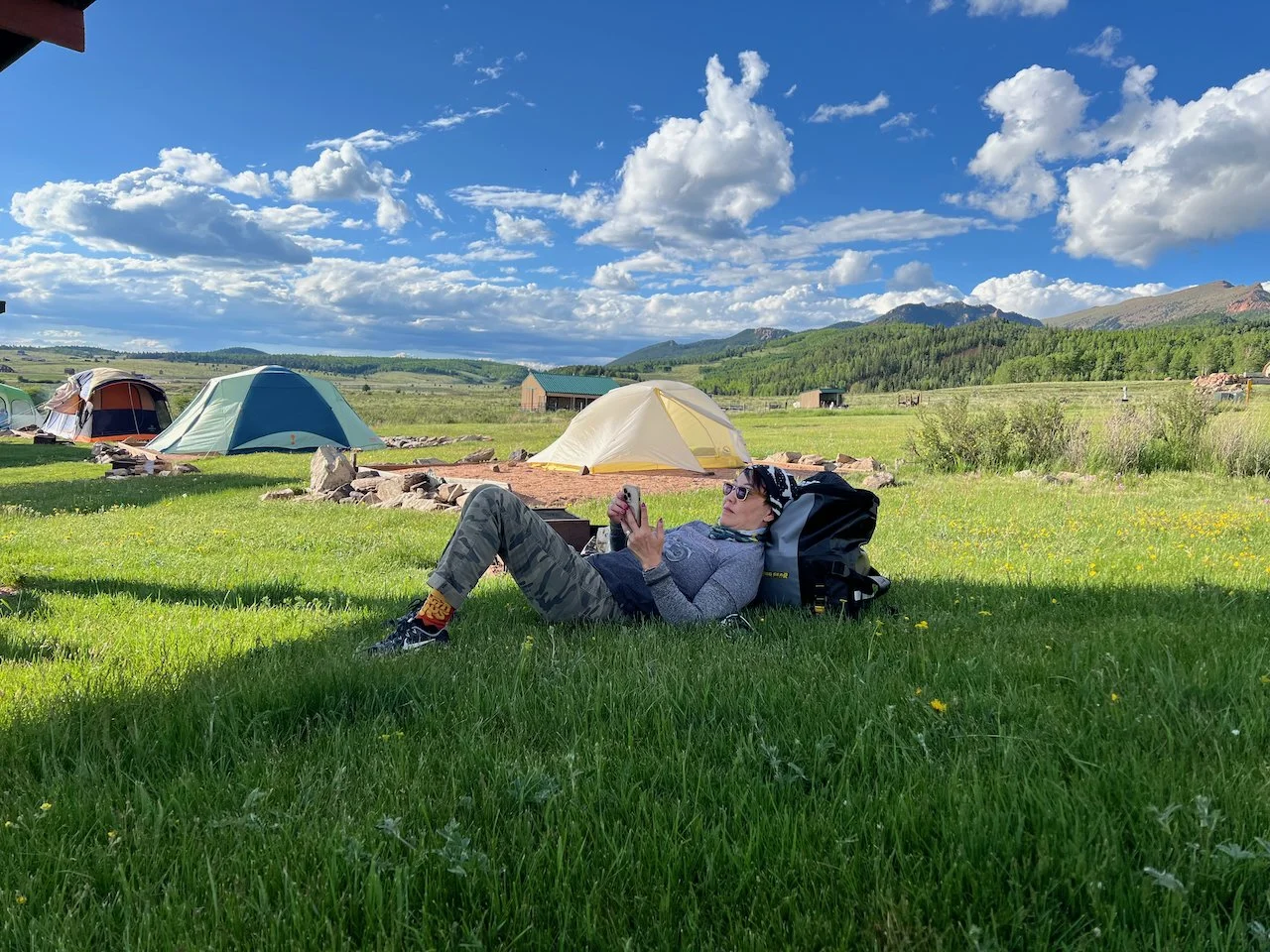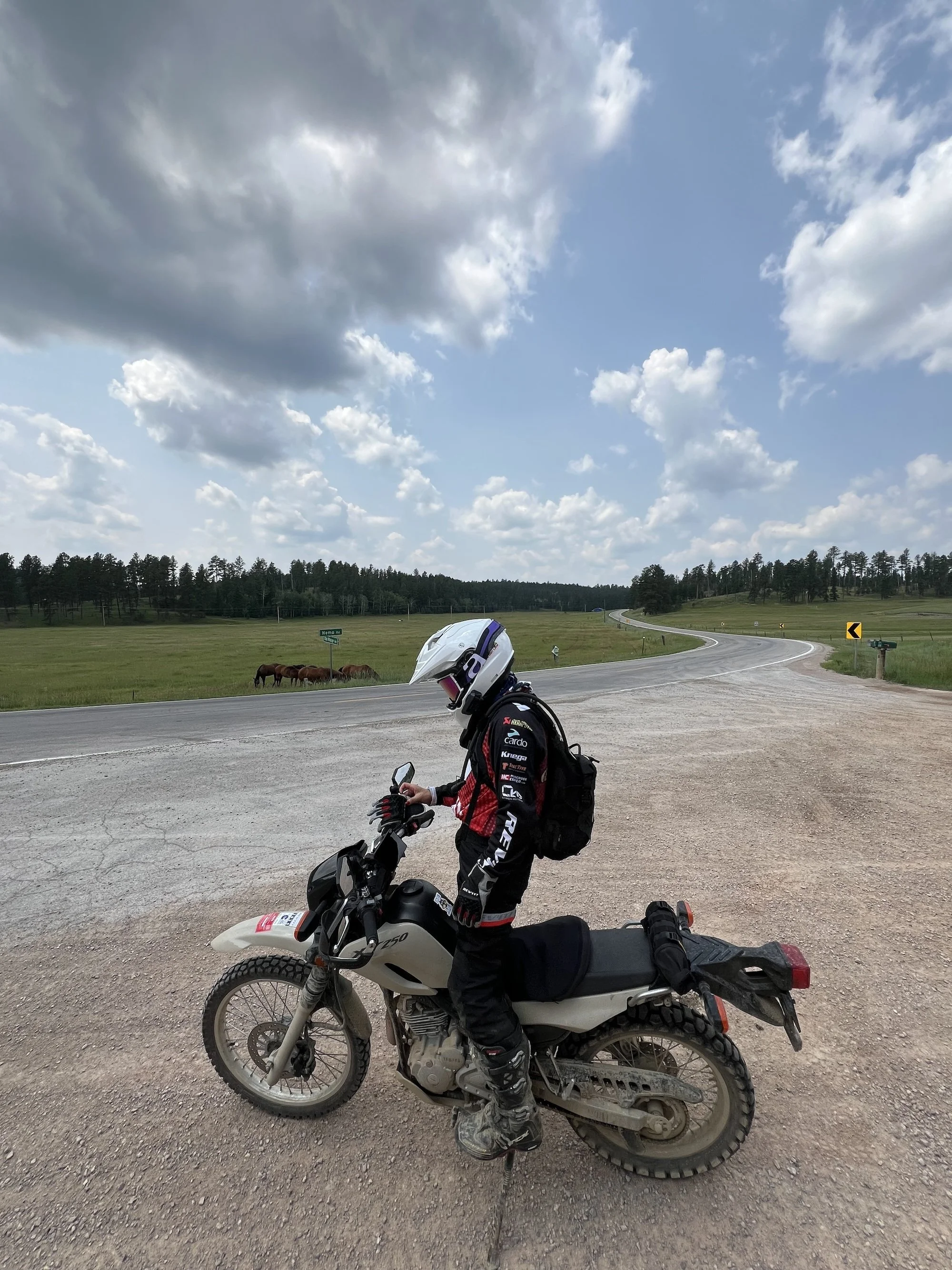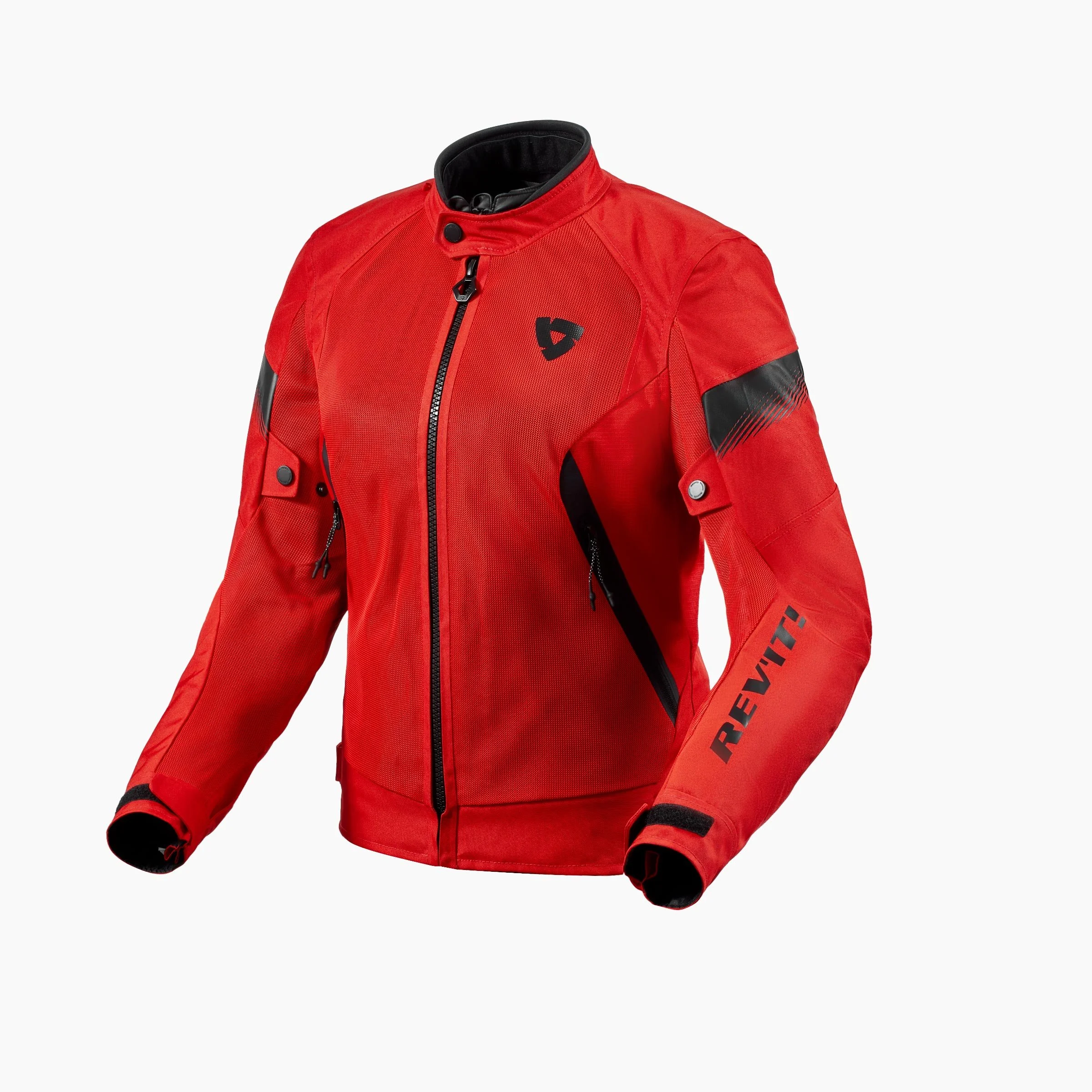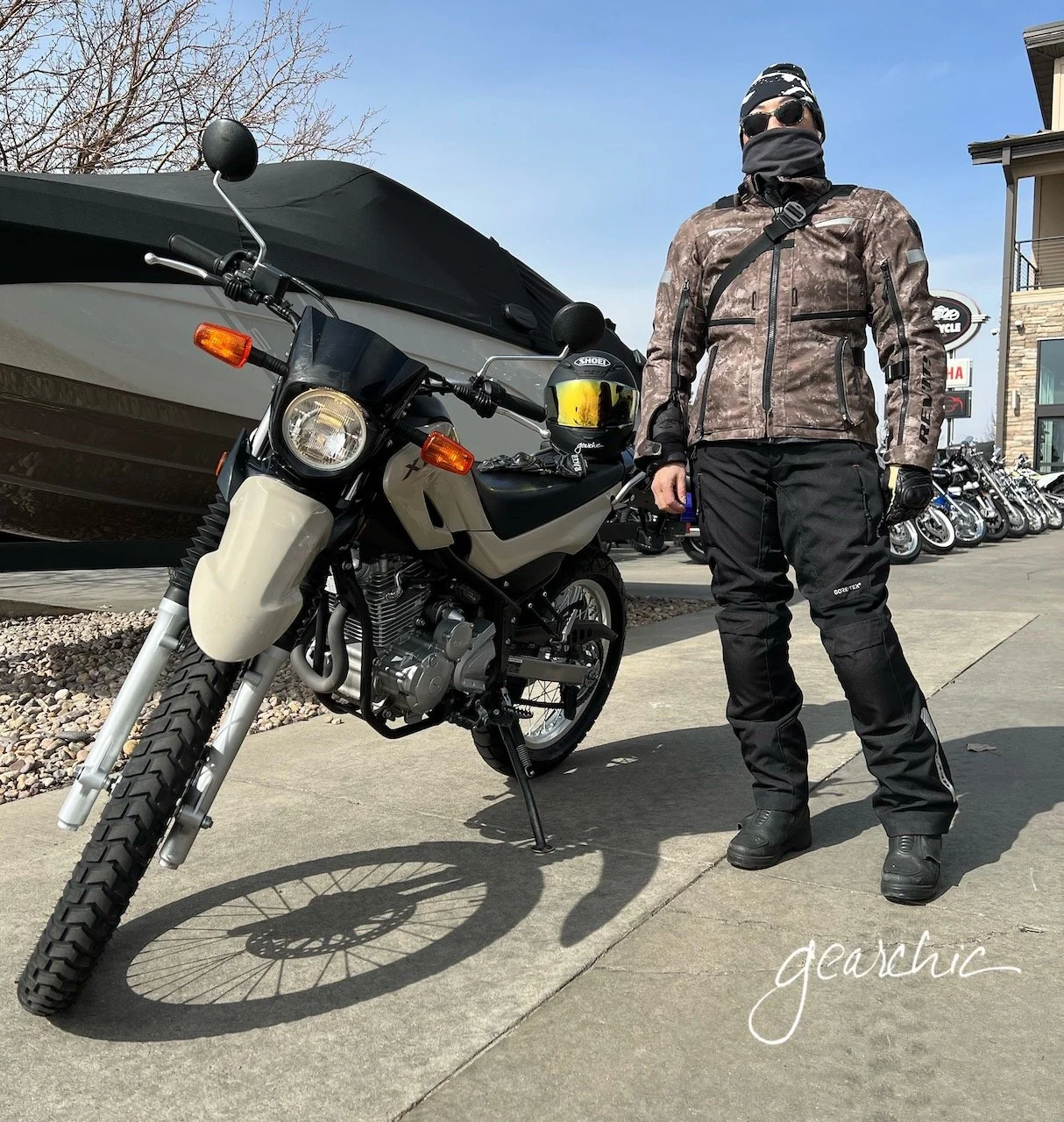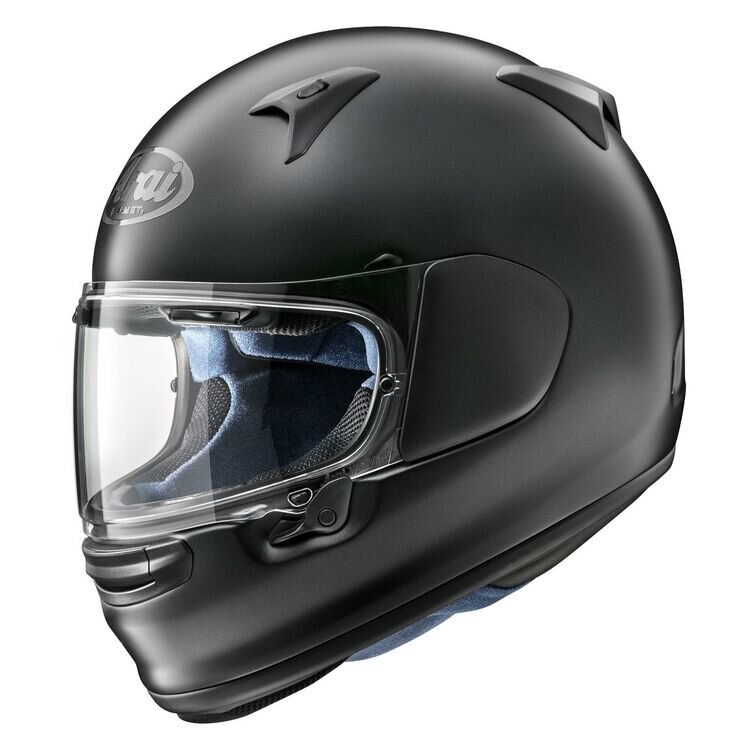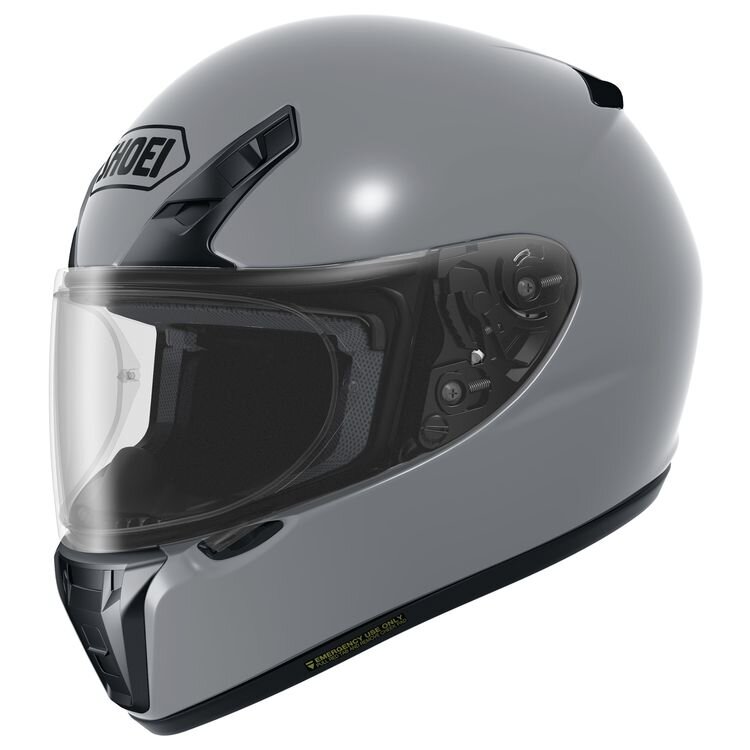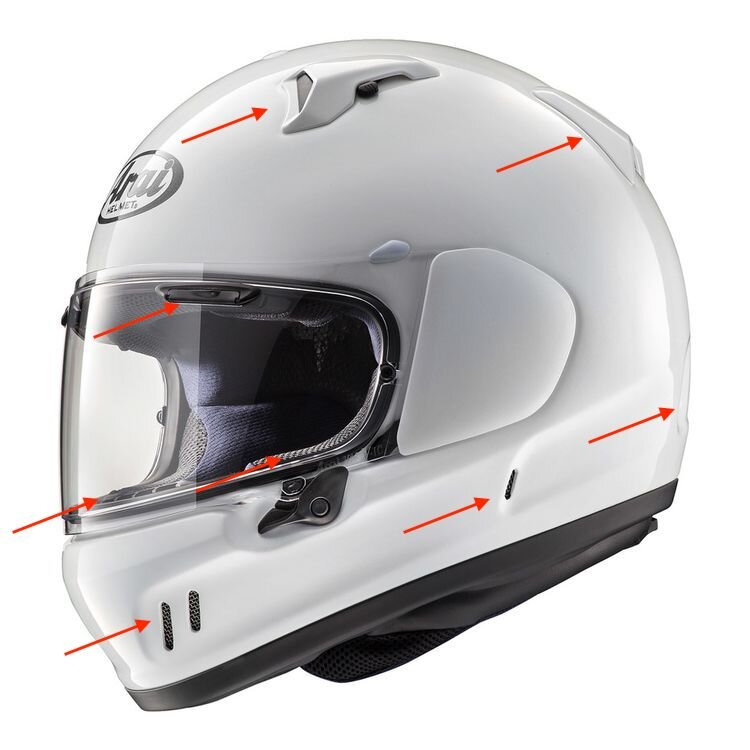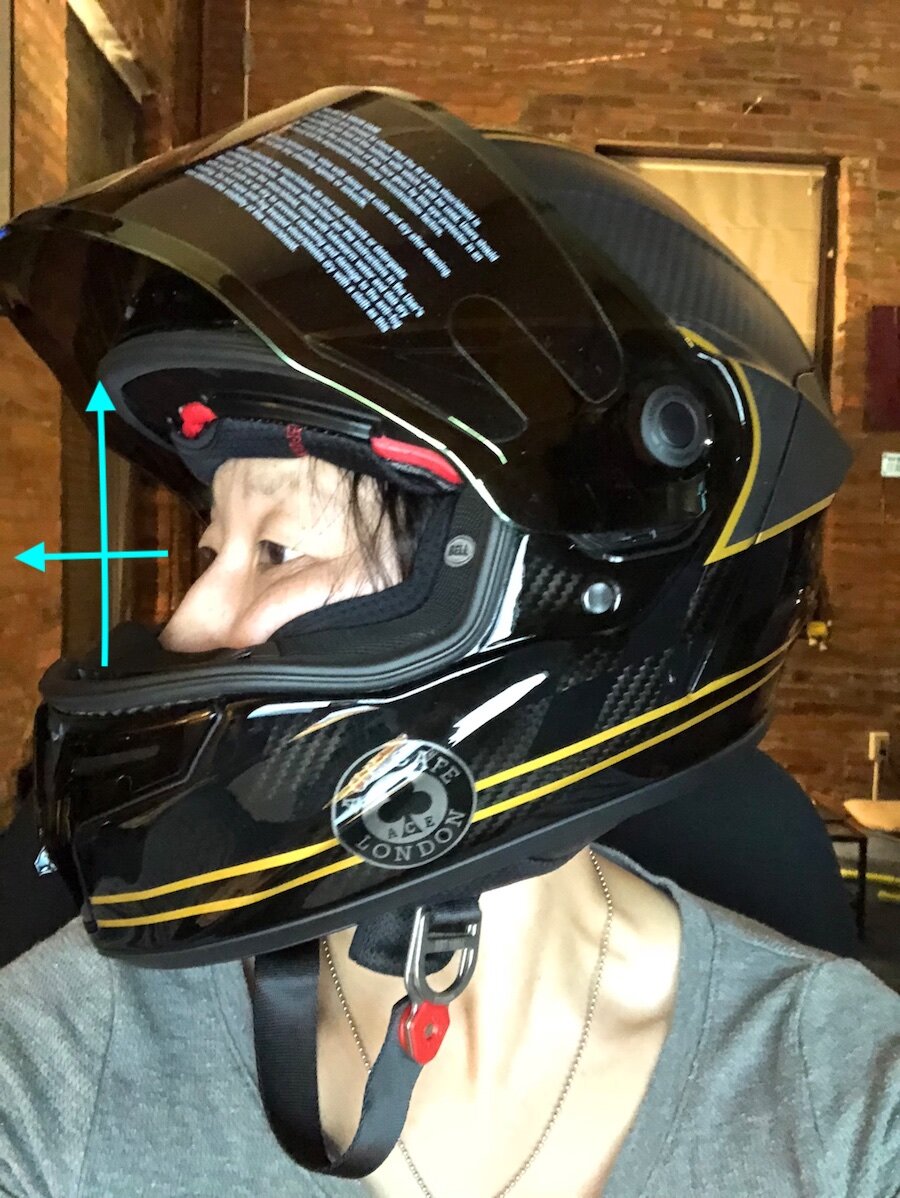2003. My first experience as an adult on a two wheel motorized vehicle. Eeek.
MSRP $559.95 Arai Regent-X (Intermediate Oval). One of the most comfortable helmets you’ll ever. An excellent brand when you have very full, round cheeks.
This is the only photographic evidence of myself riding a motorized scooter or motorcycle wearing a half helmet. It was the first and last time I wore one.
I do remember how windy it was, my eyes watering and how exhilarating it felt. But this was on our honeymoon, so at that time, I saw this as a one time event.
After we invested in our first scooter, wearing full face helmets was not up for negotiation.
The transition for me was easy, no issues and no real discomfort. I found an affordable, easy to wear HJC CL-14 for less than ~$140 (the predecessor to the current CL-17). It was an easy decision at the time. Something that I do clearly remember is after trying on the CL-17 I mistakenly tried on an Arai RX-Q that I knew I couldn’t afford or justify. But I knew that I loved it and I wanted it. So 3 years later I invested in one.
I also understand that this decision isn’t as easy for others. After working with countless riders who struggle to make the transition from half helmet / no helmet to a full face helmet, I’ve learned a few things that make the great impact for long term comfort and commitment. Hopefully one of these tips will help you find the perfect helmet for you!
The visual of a head looking down as someone takes a photo of your head while standing on a ladder looking down.
FIT AND SHAPE
Your very first step is to understand what your head needs, physically speaking. If you aren’t sure, have someone take a photo of the top of your head like in the graphic above. Make sure that you aren’t wearing a hat and your hair is totally flat, maybe wet so that you can clearly identify your skull shape from round oval to long oval. Keep in mind that headshape isn’t the same as face shape.
Bell SRT Helmet MSRP $209: Long Oval: Fiberglass Shell: Soft Smushy Cheekpads
With this information, it’s much easier for you to shop for helmets that are going to fit you correctly.
PREMIUM COMFORT
If you can spend $1000 on an exhaust system, or upgraded suspension I can practically guarantee you can easily spend $200, $400 or $600 on a really comfortable helmet! Investing in your body is one of the best ways to give yourself what you need to make this transition.
However, it’s very lightweight (fiberglass shell), vents excessively and will make you feel less stifled. It’s a great, easy helmet to wear if you’re also a Long Oval headshape. I like the padding in this model because it’s really soft and cushy. The face shield it uses is not like the less expensive Qualifier, because it’s using the same one as their Race Star track helmet. So what that gives you is a nice high, wide field of vision. It’ll give you a little more comfort in terms of your visual field and how well you feel you can see or not.
I can almost guarantee that an extremely inexpensive helmet is one that you’ll probably never end up wearing. But if you are trying to keep your budget down especially in these times, I recommend any sub $250 helmet with a fiberglass shell like the Bell SRT:
Bell SRT (intermediate towards long oval)
HJC FG-17 (intermediate oval, currently on closeout)
Sedici Strada II (intermediate oval)
HJC F70 (modular, intermediate oval)
Scorpion R710 (intermediate oval)
HJC i70 (intermediate oval)
These options will feel a little lighter than other styles, and will just give you a little more comfort overall than their non fiberglass counterparts.
On the other end of the spectrum is a higher pricepoint like Arai or Shoei. When I’m trying to help fit someone in person and they’re trying to transition, my first step is to get them fitted first.
The most difficult aspect of getting your helmet right is figuring the fit. And if I can show you what a perfect, 10 out of 10 feels like then you will have a solid foundation as to what it could and should feel like. Rather than choosing something strictly based on color and size without any thought to fitment and true comfort.
This is especially helpful if you can’t spend $500 but need to figure out what option in your budget comes closest to fitting like the more expensive option that you can’t quite justify. Sometimes, because you’ve experienced something GREAT, it can be hard to say no when it feels that good!
Center pad for Shoei RF-SR
Something that brands like Shoei and Arai offer are multiple sizes not only for cheekpads (to soften the clench on your jaws) but for the center pad as well. So the interior main liner on the top of your head will be thinner by 3-4 millimeters if you need to adjust fitment. Just remember to give yourself a few weeks of riding time before you purchase liners because often times the initial break in period is all you need to feel better.
Unique channel events that push air physically through the helmet. ShoeiHelmetsUsa.com.
VENTILATION
Something all of the helmets above have in common is the Ventilation. The Defiant-X above has an arrow for each intake and exhaust vent on one side of the helmet. Now double that number of arrows to get a total number that includes the vents on the other side!
This doesn’t necessarily mean you’ll be feeling a big fan on your face. In some parts, sure, like your mouth / chin and eyebrows. But the rest of the ventilation points allow for all the hot air being generated from your body to leave so that you will feel more comfortable inside the helmet.
MSRP $659.95 Arai Defiant-X with half of the ventilation points illustrated. Add up the arrows and double that number. Now you have more ventilation than ever before.
Of course, that means you may have a louder experience overall, so wear earplugs. Remember, wearing earplugs doesn’t make everything silent. It saves your ears from the high pitched wind noise which is adding to your fatigue. It’s like being on the freeway in your car. What’s more comfortable for a long car ride? Windows up or down?
Also keep in mind that ventilation is designed to work at Speed (like the channel vents above). So helmets with less ventilation tend to feel stifling when you’re just sitting in your living room. Keep your faceshield open as you wear the helmet and give yourself some time.
This also makes a HUGE difference if you generally run warm. When you’re the type of person that can wear a tshirt when it’s 50F out, then you want a helmet with lots of ventilation.
The comfort you feel on the outside will directly affect the comfort you’re feeling on the inside.
MSRP $734 Bell Race Star (Long Oval, Race Fit). Me breaking in my Bell last year in my living room.
TIME
The main thing to know is that you might need some time with the helmet. I can typically grab a helmet right out of the box and put it on for no more than 5 minutes before going riding.
But for someone like yourself who is trying to get used to the idea of this new “helmet”, you need a little more time to get used to this new experience.
3-5 days of wearing it at home for ~20-30 minutes each session should start the break in process not only physically, but mentally as well.
I recommend opening the faceshield, leaving the d-ring undone and letting it just sit on your head for a bit.
Your helmet should be so comfortable that you could fall asleep in it. It should never hurt you, cause headaches, pressure points or jaw pain. This is after a minimum of 3-5 minutes. Any initial shock or discomfort should start to subside and feel better the longer you wear it. So that’s also why it’s crucial for you to complete the first step of getting that fit shape figured out so you don’t set yourself up for a really uncomfortable experience.
You should know that one bad experience with a helmet doesn’t mean every helmet will feel that way. Promise! It just means that you likely: didn’t understand your head shape or chose a helmet for the wrong reasons. It may also mean that you only gave yourself 10 seconds to give it a try, you may have left the faceshield closed and you may have gone riding in it too quickly.
TRY MODULAR
My brief experience wearing a Schuberth C3ProW.
And if all else fails, try a modular (flip up).
There are lots of modular choices available and it’ll give you a great stepping stone towards a full face helmet. Of course you’ll never have as many choices for modulars as you do fulls, but if you need something in the middle to get yourself acclimated I highly recommend a modular to start.
You’ll gain a great level of protection that you haven’t had before.
Raising the chinbar will give you the ability to quickly raise it up at stop lights (and then close quickly when the light turns green), gas stations and other pitstops.
They’re not designed to wear while completely open but they are incredibly versatile and can offer you lots of protection and flexibility.
HEADWEAR
If you have long or thick hair that’s difficult to manage underneath a helmet, I highly recommend a Diva Do by Raci Babi.
This will also increase your comfort dramatically so that you don’t feel like your hair is being completely ravaged underneath.
If you have short hair like I do I still recommend wearing a light tube like a HooRag.
I wear one underneath my helmet when it starts to get really hot and really cool. It gives me an extra layer of insulation from the heat / cold.
It sounds crazy but wearing more is how you stay cool and comfortable. Reverse wind chill is real and it can cause you to go into heat stroke. This article outlines exactly what happens when you let too much heat in. Wearing a full face or modular helmet is how you can easily keep yourself from excessive exposure and potential risk for heat stroke and as well as skin cancer.
https://www.fix.com/blog/motorcycle-riding-in-hot-weather/
I hope this information truly helps you find a comfortable, awesome helmet that you want to wear every time you ride.
It doesn’t matter how much or what type of bike you ride when it comes to the risk factor of not wearing a helmet.
Simply choosing to ride a motorcycle does.

